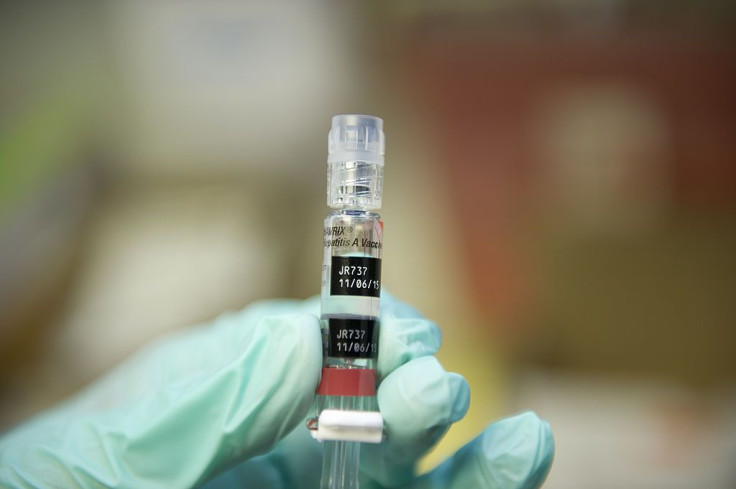Hepatitis B-Positive Mothers Increase Child's Risk Of Chronic Infection; New Study Offers Hope For Treatment

Danjuma Adda didn’t always take his hepatitis B (HBV) seriously. In Taraba State, Nigeria, where he resides, there was a lack of general knowledge and awareness about the virus when he was diagnosed in 2003. What was known, though, was that people got the sickness through sex. Married and afraid of being stigmatized for something he couldn’t explain, Adda decided to keep it to himself.
It wasn’t until he conducted his own research that he learned the virus could also be transmitted through childbirth. And, while acute HBV can be treated, 90 percent of infants and up to 50 percent of young children exposed to it will develop an incurable chronic infection, according to the Hepatitis B Alliance. At that point Adda’s wife was pregnant. “I thought, ‘Oh my god, what will happen to our child?'" he told Medical Daily.
Of the estimated 350 million people diagnosed with chronic HBV, most got it from their mother. Now, researchers from the University of Southern California may have made a breakthrough that could improve their lives: In a new study, they detail how they were able to successfully cure mice of chronic HBV in as little as a month.
Hope for a cure
When adults transmit HBV, it’s usually a result of sharing needles or having unprotected sex. If a mother is HBV-positive, however, her baby can acquire the virus from her bodily fluids. This vertical transmission is the kind that leads to lifelong infection, senior author Jing-hsiung James Ou, a professor of molecular microbiology and immunology at the Keck School of Medicine at the University of Southern California, told Medical Daily; there are treatments, but patients have to take drugs every day.
Prior studies have linked chronic HBV to the Hepatitis B e-Antigen, a viral protein that’s secreted when cells are infected. But until Ou’s study, researchers were not sure of the specifics. Ou and his colleagues found that when HBV-infected mice were exposed to the e-Antigen, their immune system was suppressed; it didn’t recognize the virus, allowing it to persist. In particular, the antigen turned hepatic macrophages, immune cells in the liver that work to eliminate foreign invaders and toxins, against themselves.
The researchers then injected the mice with an experimental drug that removes abnormal liver cells. Their immune systems restored to normal, and in about a month’s time, the infection was gone.
“The e-Antigen has been known for 40 years, but the function has not been clear until now,” Ou said. “Now we know that this virus uses the antigen to educate offspring’s immune system. That’s why they become a chronic carrier.”
As is the case with every animal study, a lot of work has to be done to make an effective treatment for humans. Ou said the next step is to try to replicate these findings in larger animals before going through the trials and tribulations of getting a green light for human clinical trials.
Still, the door for potentially curative treatment is now wide open.
‘HBV can be eliminated’
The study findings could not have been timed better: May is Hepatitis Awareness Month. Adda is now an executive board member of the African chapter of the World Hepatitis Alliance-UK. As he and his team work to put a face on the disease and educate others about the mother-child connection, among other things, he finds more people are comfortable coming forward and getting the information they need to live healthfully. But compared to the rest of the world, particularly the United States, Africa is still behind in the fight against HBV.
“Information should be attainable,” Adda said. “It’s possible to eliminate HBV, but we need everyone, including the government, policy makers, and the media involved.”
Three-quarters of the world’s population lives in areas where there are high levels of infection, including sub-Saharan Africa, southeast Asia, Japan, Australia, and New Zealand, as well as parts of the Middle East and central Europe. In countries like China, Senegal, and Thailand, the infection rates are especially high in infants, the World Health Organization reported. In the U.S., the Asian Liver Center Stanford has found that one in 10 Asian-Americans lives with HBV.
Not only do patients need an effective clinical treatment, they also need access to it. That’ll be an important part of the conversation if and when Ou’s treatment makes it to human trials. For now, just hearing that researchers are finally making headway, Adda said, fills him with “hope, happiness, and much joy.” Since his wife is HBV-negative, his kids, too, have tested negative for the virus. Overall it’s a work in progress, he said, but we’re almost there.
Source: Jing-hsiung J, et al. Maternal-Derived Hepatitis B Virus e Antigen Alters Macrophage Function in Offspring to Drive Viral Persistence after Vertical Transmission. Immunity. 2016.



























